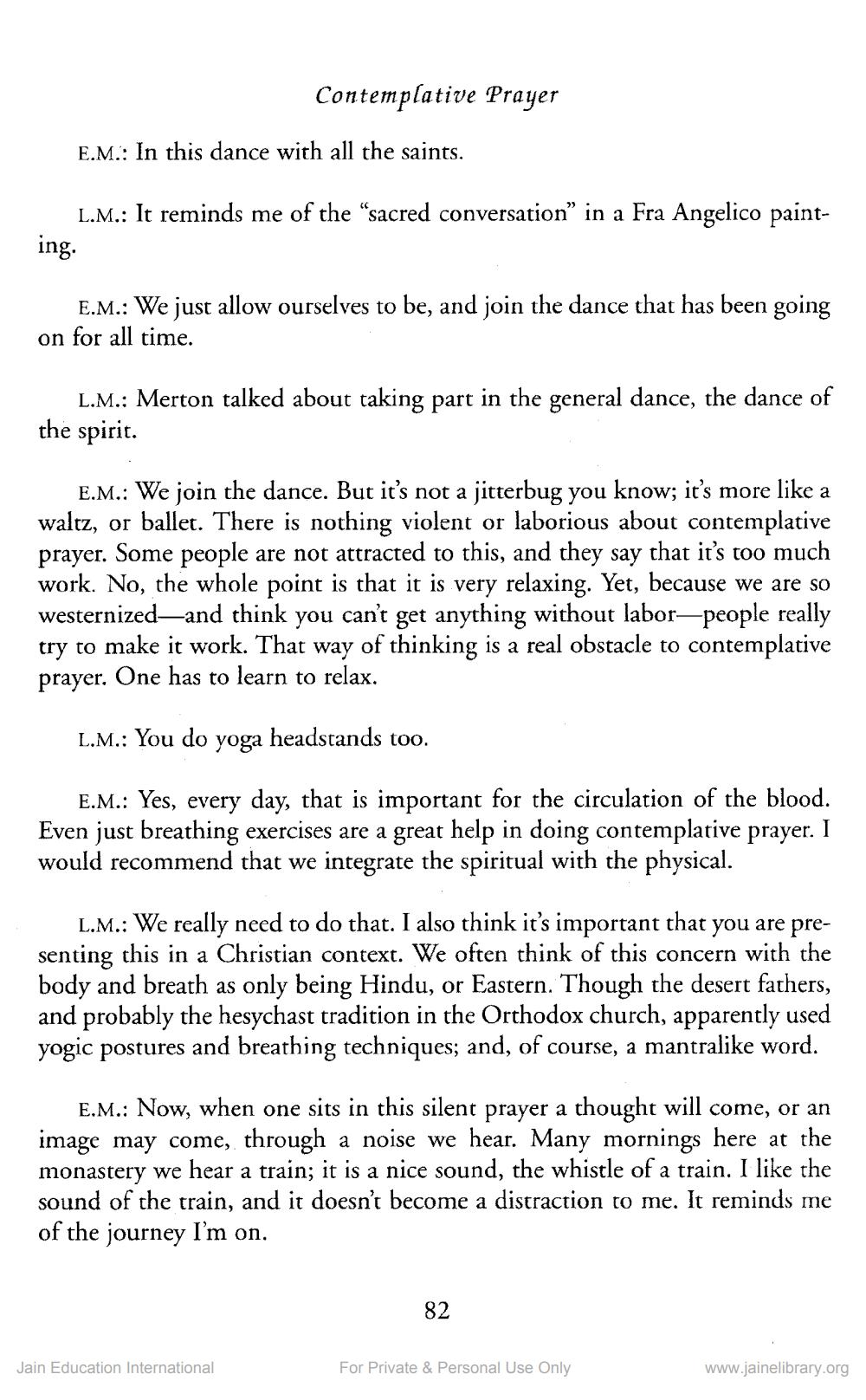________________
Contemplative Prayer E.M.: In this dance with all the saints.
L.M.: It reminds me of the “sacred conversation” in a Fra Angelico painting.
E.M.: We just allow ourselves to be, and join the dance that has been going on for all time.
L.M.: Merton talked about taking part in the general dance, the dance of the spirit.
E.M.: We join the dance. But it's not a jitterbug you know; it's more like a waltz, or ballet. There is nothing violent or laborious about contemplative prayer. Some people are not attracted to this, and they say that it's too much work. No, the whole point is that it is very relaxing. Yet, because we are so westernized—and think you can't get anything without labor—people really try to make it work. That way of thinking is a real obstacle to contemplative prayer. One has to learn to relax.
L.M.: You do yoga headstands too.
E.M.: Yes, every day, that is important for the circulation of the blood. Even just breathing exercises are a great help in doing contemplative prayer. I would recommend that we integrate the spiritual with the physical.
L.M.: We really need to do that. I also think it's important that you are presenting this in a Christian context. We often think of this concern with the body and breath as only being Hindu, or Eastern. Though the desert fathers, and probably the hesychast tradition in the Orthodox church, apparently used yogic postures and breathing techniques; and, of course, a mantralike word.
E.M.: Now, when one sits in this silent prayer a thought will come, or an image may come, through a noise we hear. Many mornings here at the monastery we hear a train; it is a nice sound, the whistle of a train. I like the sound of the train, and it doesn't become a distraction to me. It reminds me of the journey I'm on.
82
Jain Education International
For Private & Personal Use Only
www.jainelibrary.org




